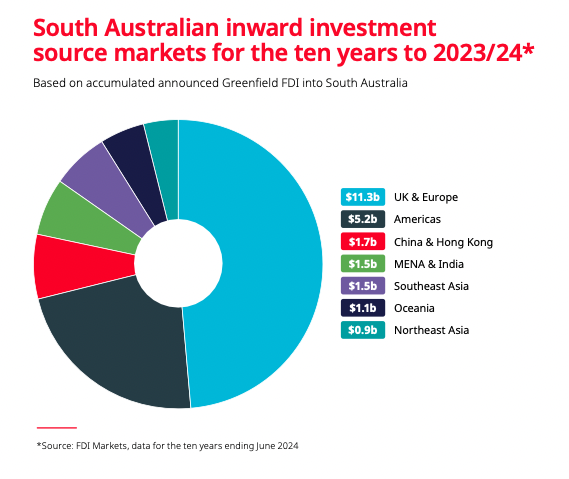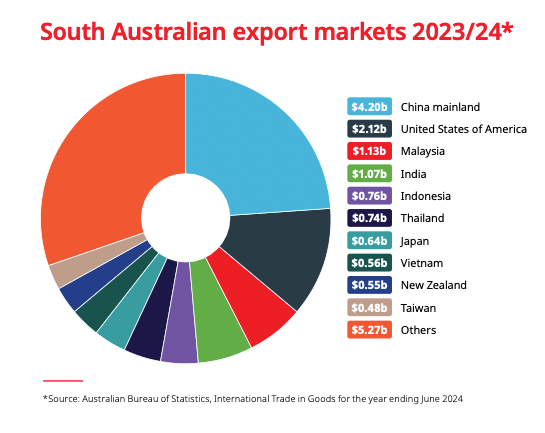‘Landmark’ new strategy to guide SA trade and investment to 2030
The state government has set ambitious new goals to increase exports and inward investment as part of a “comprehensive” strategy plan.

The new South Australian Trade and Investment Strategy to 2030 will be revealed today, outlining targets to capture a larger share of national exports and attract investment into the state.
It includes new goals for exports, investment, businesses and outcomes for First Nations and women-led businesses.
Trade and Investment Minister Joe Szakacs said it was the “most comprehensive strategy of its kind ever released for South Australia”.
As part of the strategy, emerging growth markets such as India and Southeast Asia will be prioritised.
The country’s largest two-way trading partner, China, is also highlighted as an ongoing priority for the state.
It is hoped that SA will capture a larger share of national exports, attract high-impact investments and create more jobs by increasing exports as a percentage of the state’s economic output from 15.4 per cent to 18 per cent.
Another goal is to increase the state’s share of the national foreign investment pile to five per cent, and increase the diversity of source countries.
You might like

Szakacs said the Strategy was created to take advantage of the state’s current position on the back of a 40 per cent increase in exports over the last three years.
| Sponsored |
It also acts as a template for weathering economic disruption from the imposition of tariffs by other countries.
“Broadly, this strategy does contemplate geopolitical risk,” Szakacs told InDaily.
“But to be frank, the strategy itself should not take into consideration short-term disruptions because a strategic approach to trade and investment attraction must be for the long-term.
“What will play out, and it’s been playing out now for many months, is our tactical approach to maximising opportunities.”
According to the Strategy, up to 230,000 South Australian jobs are linked to exports while 23,650 jobs were created through $20.1 billion in capital investment in the ten years to 2023-24.
Stay informed, daily
A set of strategic pillars has also been outlined in the new Strategy, highlighting priority export industries for the state and areas where the government can spend to bolster specific sectors.
This includes the wine sector’s recently announced $3.9 million Global Wine Growth Program, designed to provide an uplift in support for local exporters.
Other sectors identified in the Strategy include food and agribusiness, renewables, defence and space, tourism, mining, international education, critical and emerging technologies, health and medical.
Diversification of export markets is the “shining beacon of our overall policy”, Szakacs said.
In 2023/24, mainland China was the state’s biggest export market at $4.2 billion, followed by the United States ($2.12 billion) and Malaysia ($1.13 billion).
The strategy highlights India and Southeast Asia as future focus areas for the state. Currently, SA exports $1.07 billion to India.

“We want to see more South Australian product exported to more places,” Szakacs said.
“When we saw the almost halting of trade across some of the most important areas with China, there was a really profoundly negative impact economically for South Australians.
“We’ve been really successful in rebuilding the benefit of our trade with China.
“What diversification means is that we smooth the bumps of these foreseeable and unforeseeable trading and geopolitical risks.”
Szakacs said the Strategy was about “driving ambition”.
“It’s about matching the ambition of industry. The reason we have the opportunity to be ambitious is because South Australia wants us to be ambitious, and by being ambitious we drive the economic benefits of trade and investment attraction.
“There are 200,000 South Australians who are employed today because they are connected to trading.
“It is important that we see ourselves as a state that can innovate, that can grow and can manufacture much of what our region and our major partners need.”








